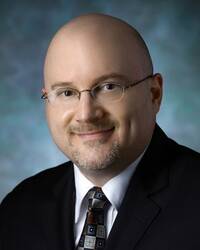
19 Jul Majority of Medical Misdiagnoses Occur in Patients with Less Obvious Disease Manifestations
MedicalResearch.com Interview with:

Dr. Newman-Toker
David E. Newman-Toker, MD PhD (he/him)
Professor of Neurology, Ophthalmology, & Otolaryngology
David Robinson Professor of Vestibular Neurology
Director, Division of Neuro-Visual & Vestibular Disorders
Director, Armstrong Institute Center for Diagnostic Excellence
Johns Hopkins Medicine
MedicalResearch.com: What is the background for this study?
Response: Diagnostic errors are believed to be a major public health issue, but valid, quantitative estimates of harm are lacking. In 2015, the National Academy of Medicine stated in their report Improving Diagnosis in Healthcare that improving diagnosis was a “moral, professional, and public health imperative” yet also noted that “the available research [is] not adequate to extrapolate a specific estimate or range of the incidence of diagnostic errors in clinical practice today.” We sought a scientifically robust answer to the question of how many patients in the US suffer serious harms as a result of medical misdiagnosis.
MedicalResearch.com: What are the main findings?
Response: An estimated 800,000 patients become permanently disabled or die from diagnostic error each year in the US.
Three-fourths of these serious harms are attributable to vascular events, infections, and cancers.
What has been the impact of increased ER crowding, reduced reimbursements due to managed care and non-payers, as well as fewer nurses and doctors entering the emergency field?
MedicalResearch.com: The precise impact of emergency department crowding and staffing shortages on diagnostic error rates is unknown, but it is self-evident that delays in providing ED care will tend to delay diagnoses.
Since the majority of diagnostic errors already occur in patients with less obvious manifestations of disease, it is probable that crowding and staff shortages will meaningfully exacerbate harms from diagnostic delay.
MedicalResearch.com: What should readers take away from your report?
Response: Diagnostic error is a major public health problem, causing 0.6 to 1.0 million serious harms each year in the US. The fact that nearly 40% of harms are accounted for by just 5 diseases argues the problem is far more tractable that previously imagined. Decreasing misdiagnosis for stroke, sepsis, pneumonia, venous thromboembolism, and lung cancer could potentially prevent ~150 000 serious harms.
MedicalResearch.com: What recommendations do you have for future research as a results of this study?
Response: Future research should focus on the real-world preventability of these harms by testing disease-specific solutions for their impact on improving diagnostic outcomes for patients.
MedicalResearch.com: Is there anything else you would like to add? Any disclosures?
Response: Diagnostic error is the most under-resourced public health crisis in America. Federal research dollars committed each year towards diagnostic error are less than what we spend annually on research related to smallpox — a disease eradicated more than half a century ago. To prevent death and disability from diagnostic error, this must change.
Any disclosures?
FROM THE MANUSCRIPT…
Competing interests DEN-T has a career focus and conducts research related to diagnostic errors, including in patients with dizziness and stroke. He serves as the principal investigator for multiple grants and contracts on these topics. DEN-T is a former volunteer President and member of the Board of Directors of the Society to Improve Diagnosis in Medicine. Johns Hopkins has been loaned research equipment (video-oculography (VOG) systems) by two companies for use in DEN-T’s research; one of these companies has also provided funding for DEN-T’s research on diagnostic algorithm development related to dizziness, inner ear diseases and stroke. DEN-T has no other financial interest in these or any other companies. DEN-T is an inventor on a provisional patent (US PCT/US2020/070304) for smartphone-based stroke diagnosis in patients with dizziness. He gives frequent academic lectures on these topics and occasionally serves as a medico-legal consultant for both plaintiff and defense in cases related to dizziness, stroke and diagnostic error. DS is also a former volunteer member of the Board of Directors of the Society to Improve Diagnosis in Medicine. There are no other conflicts of interest. None of the authors have any financial or personal relationships with other people or organizations that could inappropriately influence (bias) their work.
Citation:
Newman-Toker DE, Nassery N, Schaffer AC, et al
Burden of serious harms from diagnostic error in the USA
BMJ Quality & Safety Published Online First: 17 July 2023. doi: 10.1136/bmjqs-2021-014130
https://qualitysafety.bmj.com/content/early/2023/07/16/bmjqs-2021-014130
The information on MedicalResearch.com is provided for educational purposes only, and is in no way intended to diagnose, cure, or treat any medical or other condition. Always seek the advice of your physician or other qualified health and ask your doctor any questions you may have regarding a medical condition. In addition to all other limitations and disclaimers in this agreement, service provider and its third party providers disclaim any liability or loss in connection with the content provided on this website.
Last Updated on July 19, 2023 by Marie Benz MD FAAD
